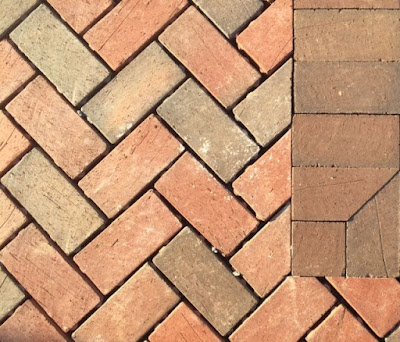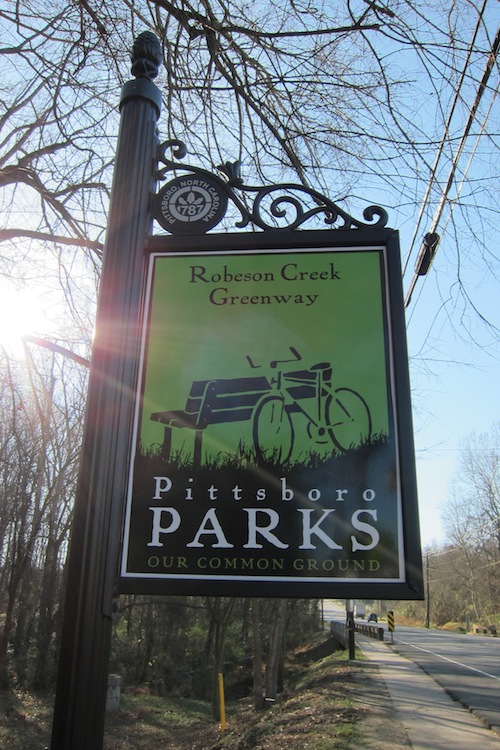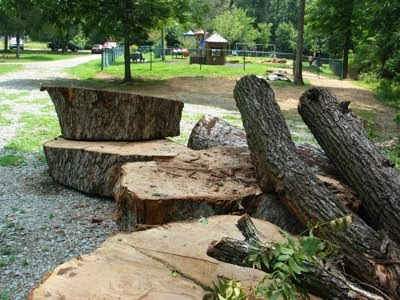Hidden Stormwater Features of Page Vernon Park
When designing Page Vernon Park, it was determined early on
that a brick paver hardscape would be a particularly appropriate surface for
this tiny, urban park. Native North
Carolinian brick requires negligible maintenance, can accommodate high volumes
of foot traffic in the concentrated space (less than a tenth of an acre), and
provides a safe surface for patrons with canes, baby strollers, or
wheelchairs. The brick hardscape also
blends well with our existing downtown brick sidewalk network.
One might assume that a brick surface equates to an impermeable
park with stormwater flowing directly into the Town’s stormwater system — that assumption
would be mistaken.
In fact, rainwater provides water to the park’s many trees
shrubs and flowers via stormwater features hidden underfoot. About twenty two percent of the brick surface
is actually porous brick, with engineered gaps between them that allow
rainwater to filter between the bricks into layers of substrate containing aggregate
and sandy loam soils which manage stormwater onsite. Also, almost forty four percent of the park actually
remains as either grass, trees or planting beds. This means that 56% of the park remains porous
to rainwater, despite the brick hardscape.
Innovative stormwater management, however, is nothing new
for Pittsboro’s Parks. Mary
Hayes Barber Holmes Park contains several parking spaces with permeable
pavers, a rain garden, and a living roof gazeebo. There are rain gardens at the tennis courts
and the Community House and we used a compost sock during construction of Rock
Ridge Park. Compost socks
use long bags filled with hardwood mulch instead of a silt fence during construction
for sedimentation and erosion control purposes.
Concerns about stormwater runoff are rightly placed because
sediment is the number one pollutant for streams, lakes, and rivers in the Piedmont Region of North
Carolina. Features which slow stormwater’s
rapid dispersal to streams reduces sediment pollution. Raingardens
not only address sediment, but also help to manage concentrations of nitrogen
and phosphorous (nutrients which are detrimental to our water bodies in
excessive quantities). Harmful metals which often collect on parking lots can also be filtered through raingardens.
Many Pittsboro Park’s stormwater features were funded
through the tireless efforts of Dr. Karen Hall, a Pittsboro resident who’s
committed to improving the water quality of our community. She also spearheaded the major
efforts at Town Lake Park to improve the water quality of Robeson
Creek. Pittsboro is also lucky to now
have a Town
Engineer, Fred Royal, who has launched several initiatives to protect our
Town’s water Quality.
So, when you’re eating your donuts from Phoenix Bakery,
enjoying your tea from Cafe
Diem, and reading your purchase from Circle
City Books in the park, know that you’re sitting in a space which has considered
environmental sustainability into its design. Social and fiscal sustainability,
the other two pillars of sustainability, have also been considered, but that’s a
topic for a potential future blog post.




Comments
Post a Comment